I didn’t always ride small bikes. I did start on a small bike (a 1980 Yamaha SR250). I think that isn’t uncommon – maybe it was more common in the early 90s when I finally started riding. Small bikes were a lot cheaper back then, anyway.
But I didn’t stay on a small bike. I moved on to larger and larger models, until I was riding around North American on an XS1100. It wasn’t new – I didn’t want to spend the money on a new bike – but I liked that it could go on the interstate for hours and hours without making me sore or tired as my little bike did.
I discovered endurance riding, and with my schedule as a paramedic I was given 5 days off every few weeks. Long ride out, long ride back, a few days to explore wherever I was. It seemed like a good deal. I had one XS1100 set up for long rides – upgraded seat, larger fuel tank, satellite radio – and I could ride it from gas stop to gas stop without needing to stop for anything.
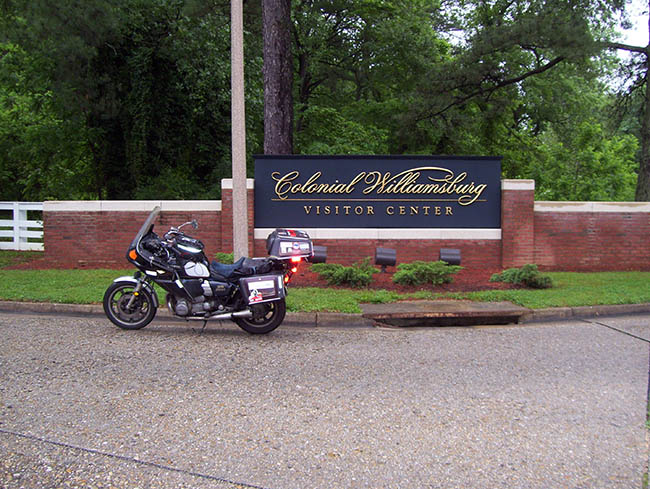
When it was time for me to take a long trip – riding around North and South America for a year – you would think having a bike all set up like that would be the obvious choice. But, instead, when I left the empty house on a May morning, it was on a 1981 Yamaha SR250 (named “Curiosity”).
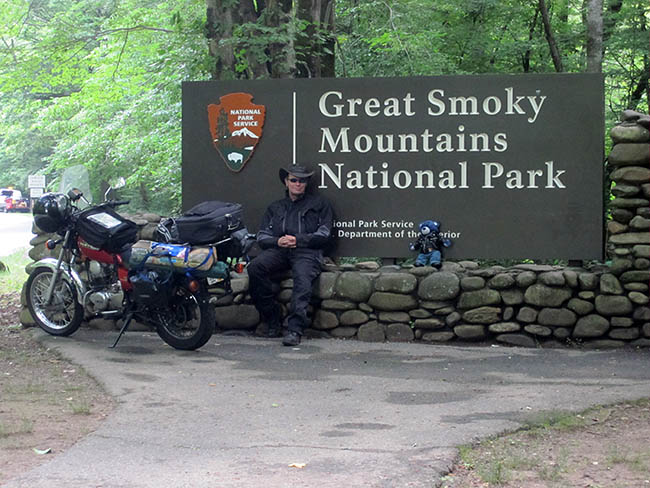
So, what happened?
Well, first, let’s talk about that endurance bike. I could ride for hours and hours without stopping. But I wanted to stop on this trip. I didn’t have anywhere to be, at least not on any real deadline. I needed the motorcycle to dictate the pace of my travel, since I knew I wouldn’t be able to do it myself. Not back then, anyway. On my XS1100 I would have been in Alaska in a few weeks, rather than a few months, and I would not have seen anything along the way. Yeah, I could say I’d been to Alaska, but this wasn’t about the accomplishment – this was about the trip.
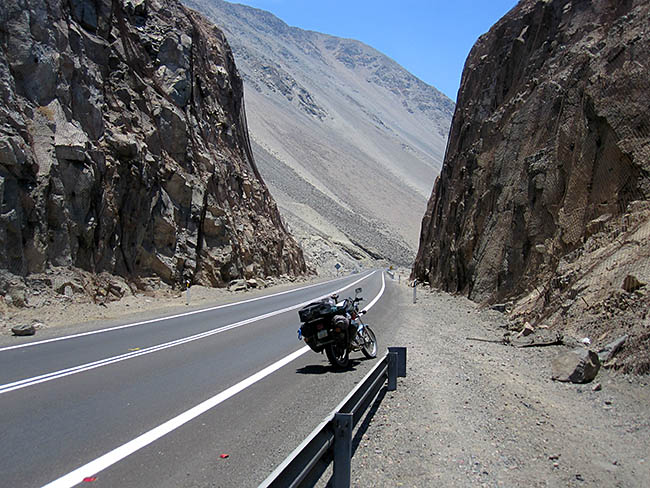
So, I was on an old, small, bike which encouraged me to stop every hour or so to look around, stretch, and generally not ride. Over the next year the length of time between stops would vary, but I would never feel the need to keep moving. Never say to myself “I’ll come back and see that later,” wondering if I ever would, and knowing I probably wouldn’t. Later on, when I got to know the bike (and upgraded its seat when the foam finally gave out), I could ride out a whole tank of gas (175 miles or so) without stopping, but I rarely did. What was the point of travel (or life, for that matter) if you passed everything by?
Now, let’s talk a minute about actual bike size. Motorcycles are getting bigger and bigger all the time. In the early 90s, a thousand cc engine was HUGE. Now, it’s still usually called a big bike, but on the low side of things. 650s used to be big, now they’re mid-sized or even “small.” 250s were around for MSF courses and as dirt bikes, but that was about it, at least in the USA. Outside of the USA, 250s were still considered respectable sized motorcycles. Some places they are actually called large motorcycles, things people only dream of buying. And those “small” (and even smaller) motorcycles serve as serious workhorses for their owners, not weekend toys or things used when the weather is nice to save some money on gas.
While Texas admits it, most of the USA, and the American consumer, like things big. So, bigger engines, more power, more torque, are always welcomed and seem as positive improvements. At a motorcycle show in Chicago a few years ago, I overheard a Triumph salesperson talking someone up to the Explorer, commenting that “In dirt, you are really going to need that extra power.” It seemed to make perfect sense to the customer, who didn’t ask “why?” Or “how much more does it weigh?”
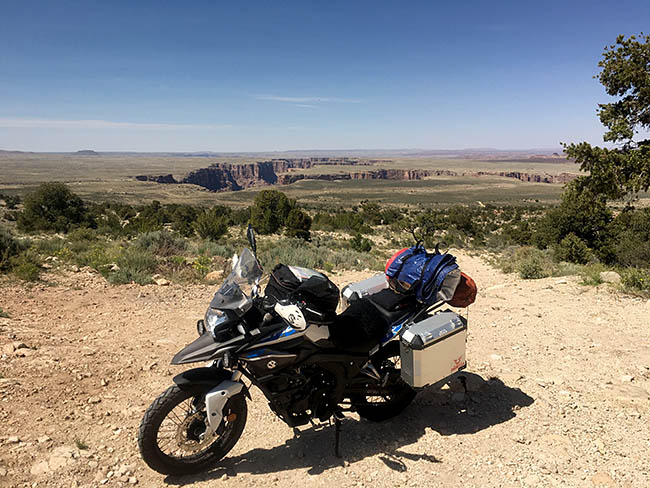
I remember when the RX3 coming to the USA was just leaving the “internet rumor” stage. Even back then, when there were three bikes in the country and no one posting in forums had ridden one, people were complaining about the engine size. “I’d buy one if it was a 400,” was common. In their defense, they really didn’t know the motorcycle and were speaking from the experience they had.
My Yamaha 250, the SR, wasn’t that common a bike in the USA. In other countries it was popular for quite a while, but it was only available two years here. So, most people haven’t heard of it, and don’t know it’s actually a Yamaha XT250, with a larger tank, better seat, street suspension, and higher gearing. This means it can actually go places, rather than being trailered to the woods somewhere, with much better speed and fuel range than any 250cc stock dirt bike. Even with 16 horsepower on a 30 year old engine, Curiosity can manage 70mph with me and luggage (though I usually cap at about 60 or so), and still have throttle left.
Most of those people complaining about the small engine were thinking of their dirt bikes – all torque and no speed. Or they were thinking of their big touring/adventure bikes, and how bigger had to be better. When the RX3 was finally available, I encouraged everyone who wanted to buy a motorcycle for travel to look at them. My wife and I each bought one, after she decided she wanted more power when riding two up with one of her girls on the back than we had with the aging SR250s.
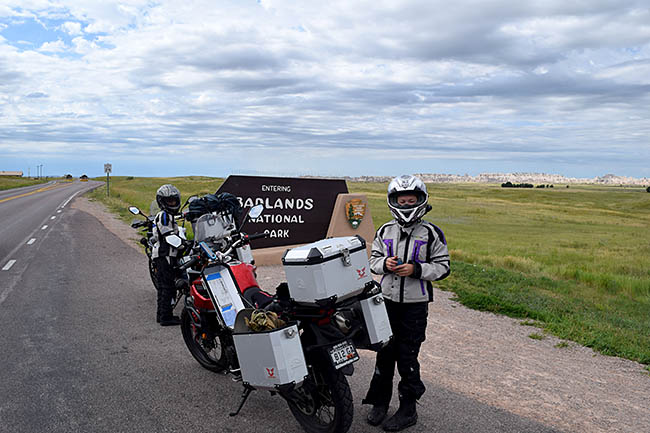
That’s right. We travel on two RX3s, each with a girl (12 and 14, as I write this) on the back. Camping gear, clothes, and food stashed in the luggage. We had a close encounter with bear in Canada, and saw one of the most amazing rainbows ever. We hiked to Hidden Lake on Logan’s Pass off the Going To The Sun Highway, and smelled all the sulfur Yellowstone had to throw at us. We played in a water hose before riding Needles, dodged a hurricane in North Carolina, and tamed the dragon (with the 12 year old (10 at the time) asking “Can you go faster?” “This is as fast as I can safely go.” “Yeah, but can you go faster?”).
All on small bikes.
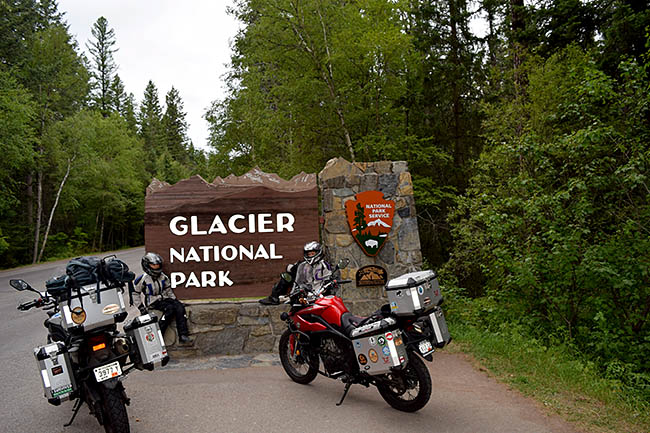
Now, I’ve always said I don’t care what people ride, so long as they are riding – going places and seeing things. If you are on the road, it shouldn’t matter what you are on. If you want to start traveling and need a bike – get a small one. It’s true you probably won’t set any speed records, but travel is about the times you stop, not the speed you get home.
If you just have an opinion without experience, I’ll listen but don’t expect me to give your words as much weight as, say Austin Vince (Filmmaker, RTW a couple times, Mondo Enduro and Terra Circa) “You will never wish your bike was bigger, or heavier.”
Andrew Pain is a motorcyclist, photographer, speaker, and author. Currently living in Wisconsin, he is planning a second ride up and down the Americas with his wife, and then heading off to some other continents. His newest book is titled Beginner to Overlander, available on Amazon, and you can follow his occasionally updated adventures at AndrewCPain.com.
**********************************************
Andrew, your guest blog is awesome. Thanks very much for sharing it with us.
My good buddies Andrew and Sue are pretty cool people. I had corresponded with Andrew when we first became involved with the RX3 and I was impressed with his work. Andrew has written a number of books on small motorcycles, and my recommendation is that you buy and read all of them. I met Andrew in person at the Overland Expo two or three years ago (we called it the “Snowverland” Expo that year because of the weather), and I wrote about him on the CSC blog. He’s a good guy. Here’s a photo of Steve with Andrew at that cold and wet event…
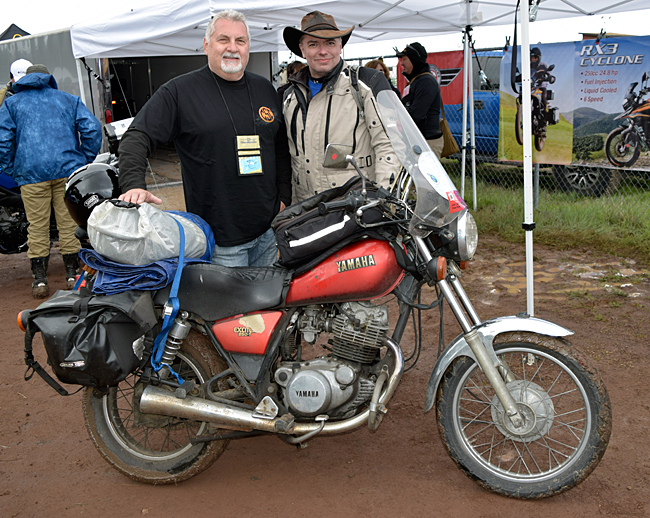
And for everyone else out there…have you ever thought about writing a guest blog? It could be a trip you’ve taken on your CSC motorcycle, your guidance on prepping for a long distance ride, something about a book you’ve written, what it’s like to participate on one of our group rides, or any other topic you think our readers would have an interest in. There’s no guarantee we’ll publish it, but there’s a pretty good chance we will, and we’d sure love to hear from you!
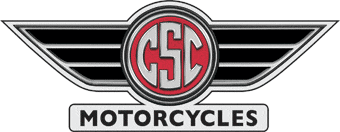
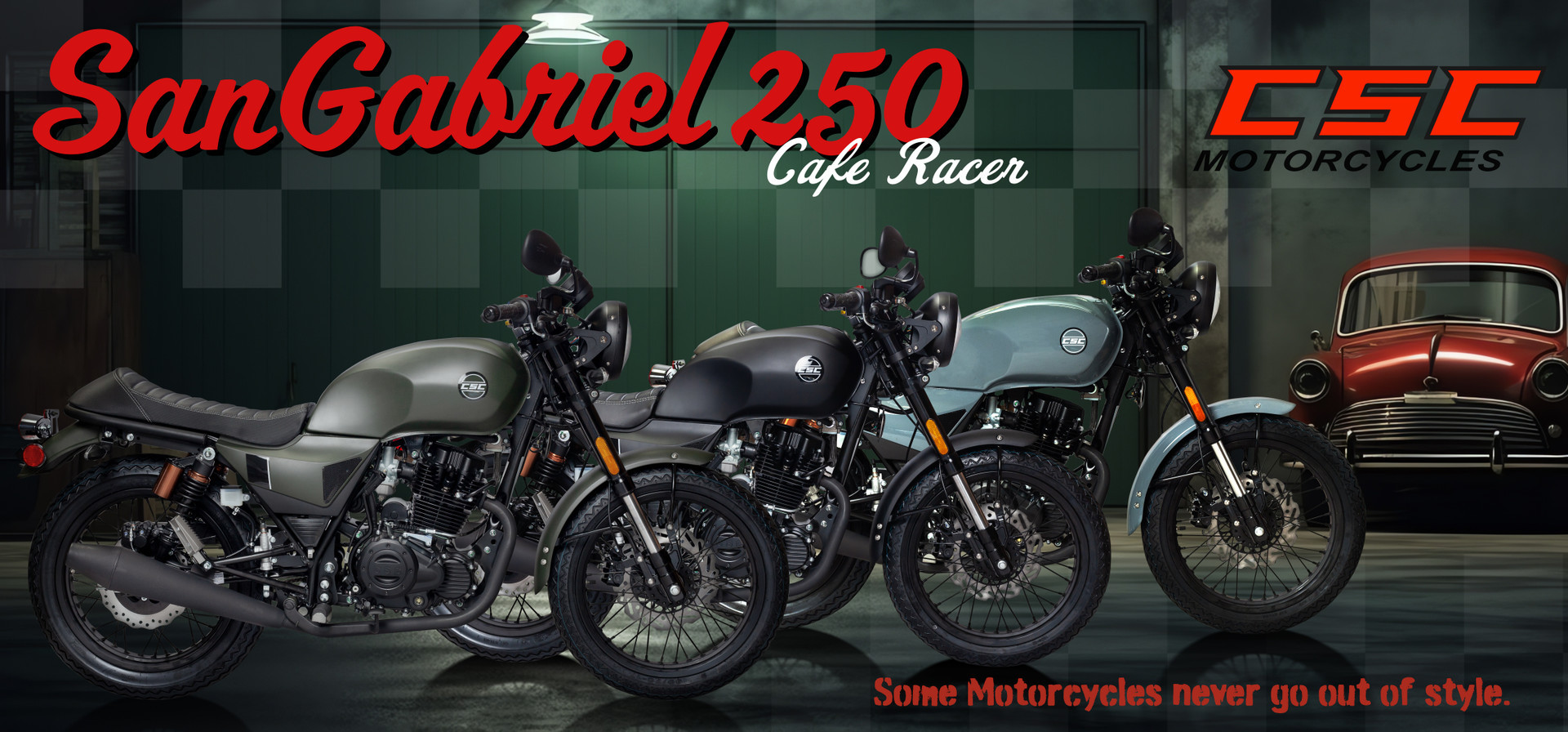
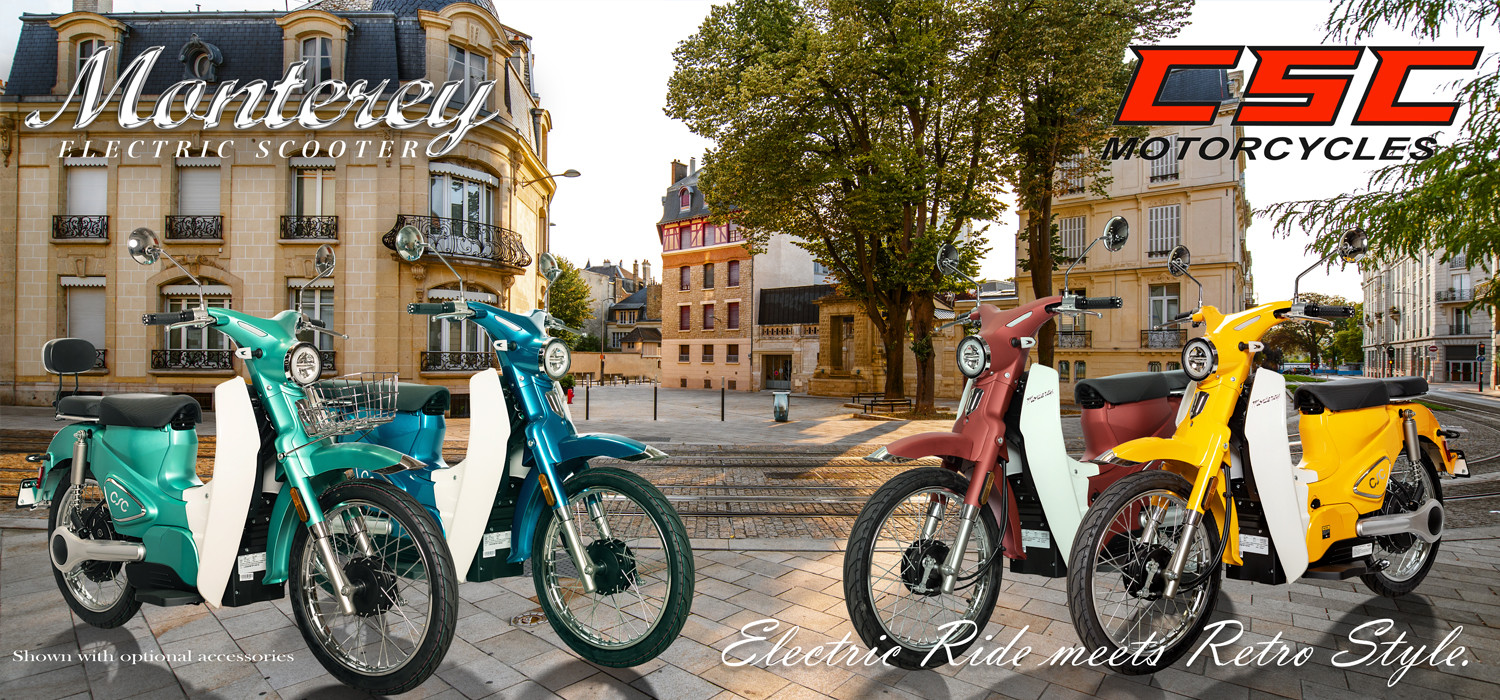
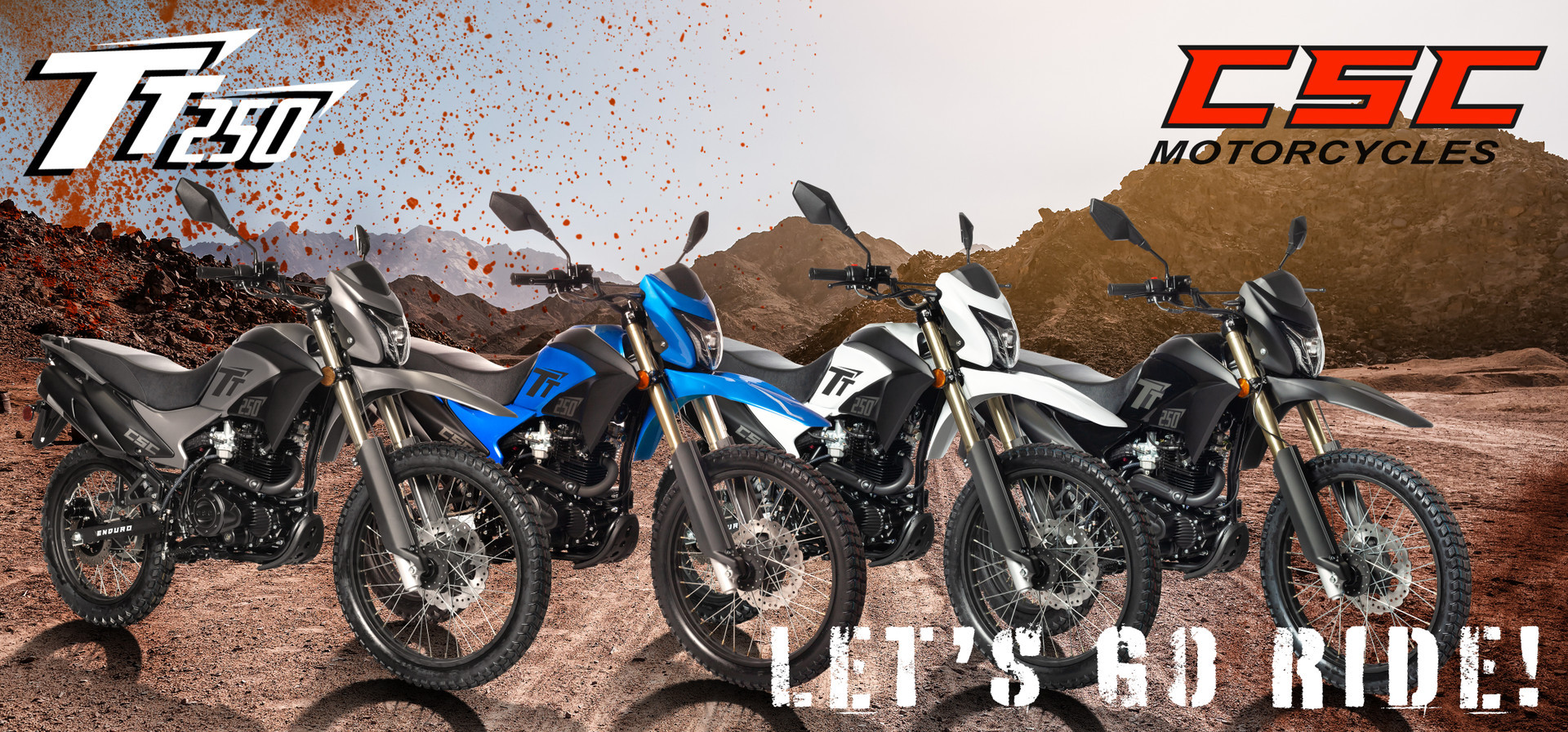
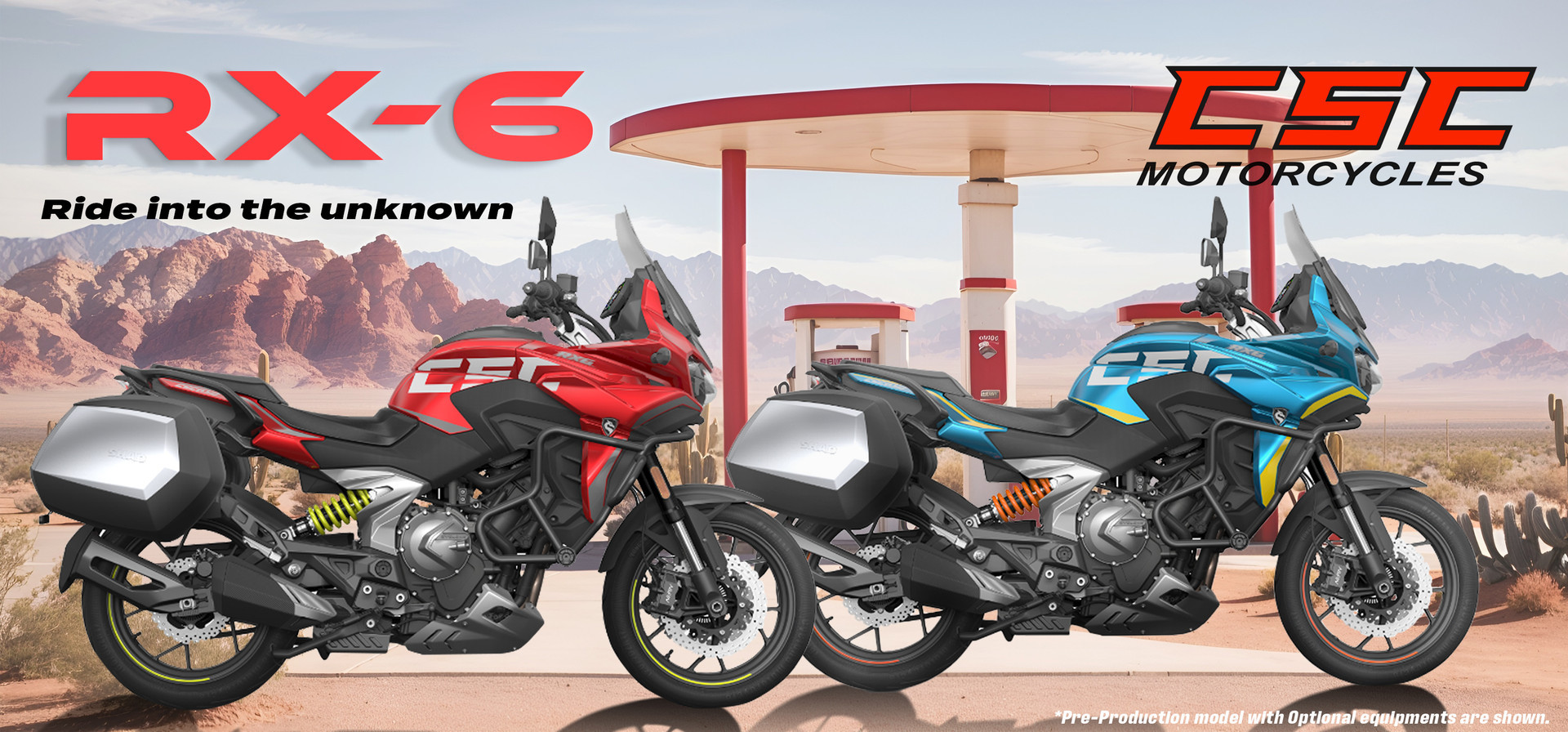
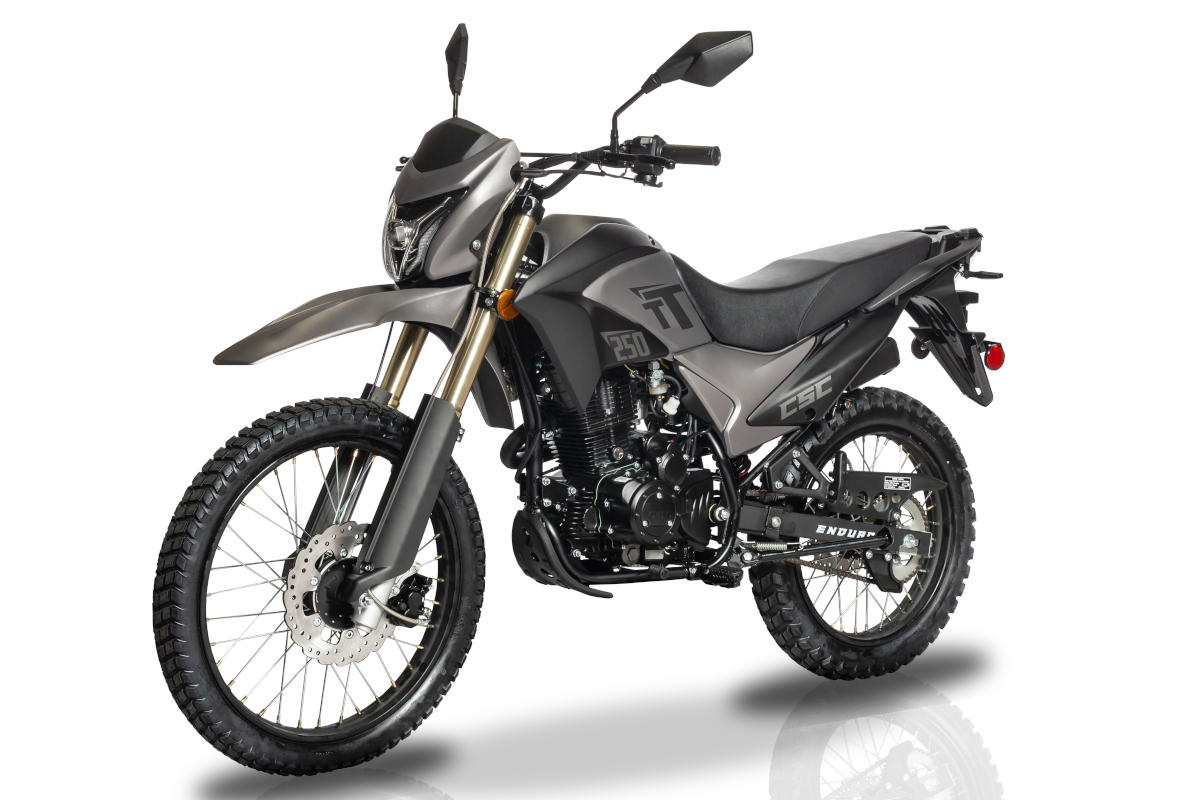 TT250 Enduro
TT250 Enduro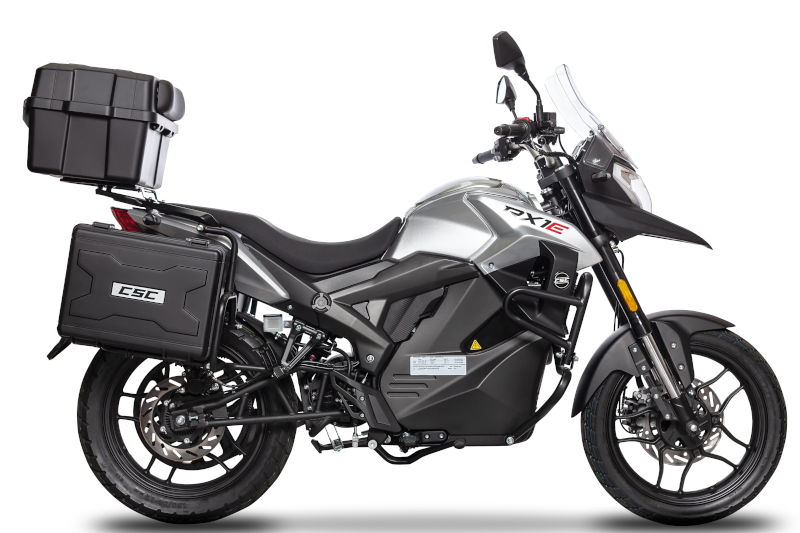 RX1E Electric Motorcycle
RX1E Electric Motorcycle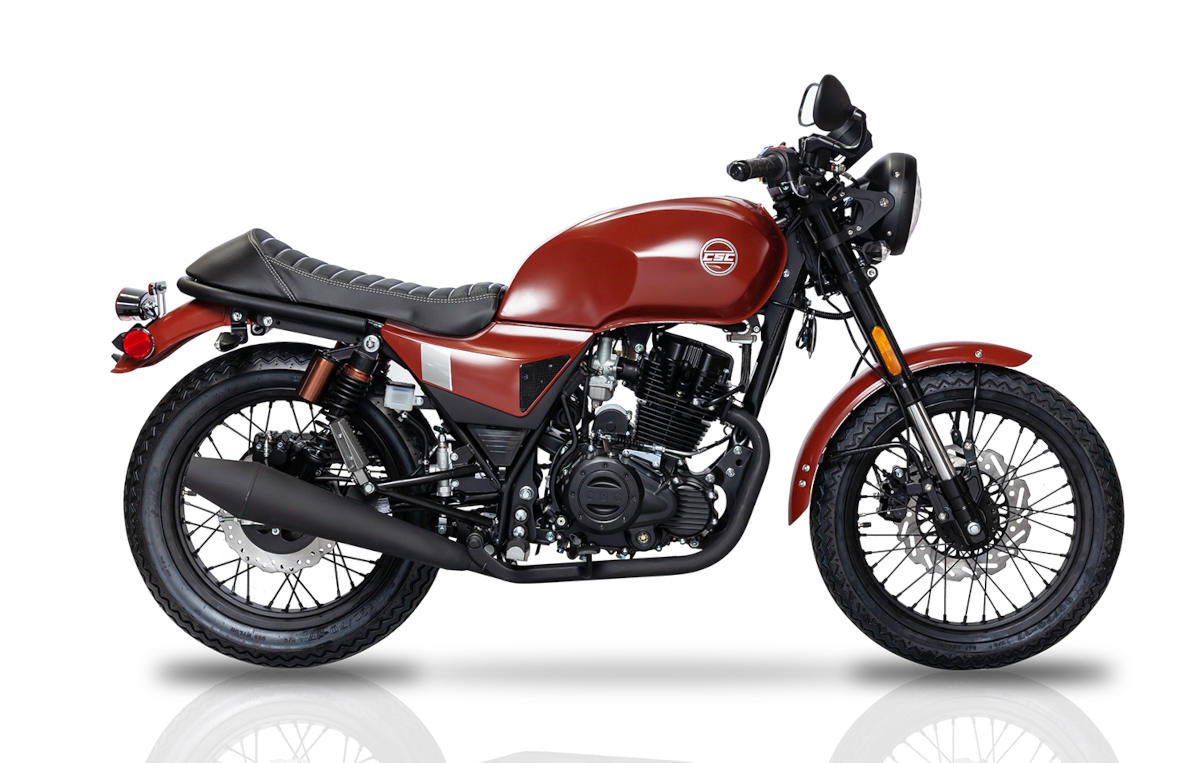 SG250 San Gabriel Cafe Racer
SG250 San Gabriel Cafe Racer